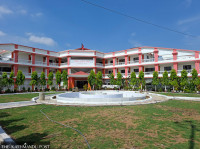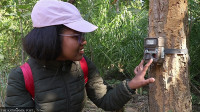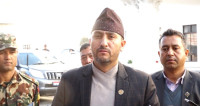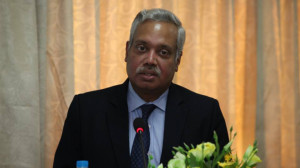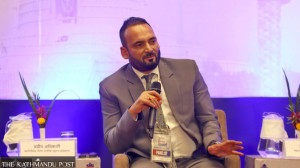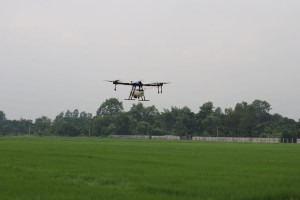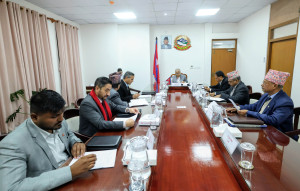National
How Nepal’s colleges are adapting to changing times—and global demands
Education institutions are introducing new programmes to meet changing student demands and stay relevant amid fast-changing technological landscape.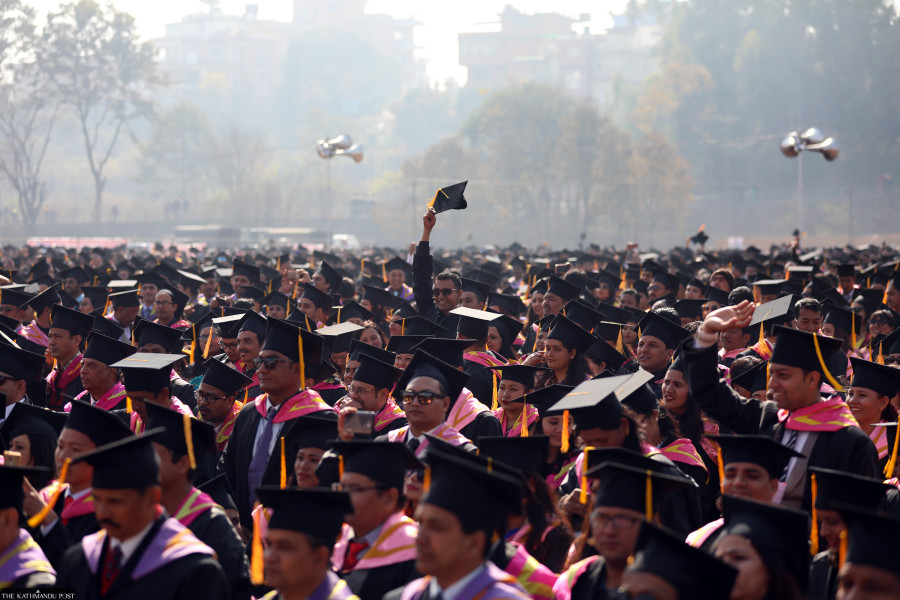
Uddhav Thakur
When enrollment went into free fall, the Kathmandu-based Himalayan Whitehouse International College was forced to suspend its once popular bachelor’s programme in Electronics and Communication Engineering. It was 13 years ago, in 2012, when the world was in the midst of a digital revolution. The advent of what is often dubbed the ‘social media age’ brought about a tectonic shift in many fields, not least in the education sector.
Programmes once considered attractive began to see declining enrollment, while newer, technology-focused courses attracted more students. And so, colleges were forced to either adapt their courses to the changing world—aligning them with changing student interests and shifting industry demands—or see them fall into irrelevance.
The shocks of that shift continue to be felt.
Recently, the Himalayan Whitehouse updated its Bachelors in Business Administration (BBA) to BBA (with IT), responding to the rising demand for tech skills among business students.
The college’s principal Toya Narayan Poudel says the update yielded the desired result—it attracted more students.
Meanwhile, at the Ace Institute of Management, which is affiliated to Pokhara University, the once highly sought-after BBA in Banking and Insurance, introduced in 2008, saw declining popularity over the past decade. “The course was too industry specific, too niche,” explains Ashish Tiwari, principal and executive director of Ace. Consequently, Pokhara University replaced it with BBA in Finance, which, it reckoned, would allow students to pursue a broader range of career opportunities.
Additionally, Ace Institute of Management also revamped its Business Information System programme into a more relevant Bachelor’s in Computer Science and Information Technology, recognising shifts in student preference and industry demand.
College operators and teachers the Post talked to said students’ interests these days are influenced not just by future job prospects and earnings but also the courses’ global relevance.
Tiwari says that nearly 40-50 percent of Ace graduates leave Nepal in pursuit of better employment and education abroad. “The salary they would earn in Nepal is no match to what they can earn in India, Singapore, or western nations,” he says.
The numbers are even starker at Himalayan Whitehouse, where almost 90 percent of the BHM (Hotel Management) students choose to stay abroad after doing internships in countries like Dubai, Singapore, and Malaysia, Poudel says. Roughly 70 percent of BBA students also move overseas, influenced by factors like societal pressure, limited financial prospects, and the appeal of life abroad.
In the STEM field, the Institute of Engineering launched the rock and tunnel engineering programme in collaboration with a Norwegian University in 2020, keeping in mind the demand for underground infrastructure development in the country.
For similar reasons, the institute launched six new undergraduate programmes—including Aerospace, Chemical, and Industrial Engineering—and several master’s courses like Cybersecurity, Architecture and Geospatial (Aerial) Engineering.
According to Sushil Bahadur Bajracharya, dean of the IOE, Computer and Electronics Engineering dominate enrollments, followed by Civil Engineering. Agricultural and Automobile Engineering programmes remain least favoured due to requirements of labour-intensive (manual work) and lack of employment opportunities, Bajracharya said.
Meanwhile, the Kathmandu University School of Engineering has introduced programmes such as Artificial Intelligence, Health Informatics, and Mining Engineering, incorporating technological updates and workforce demand. Its motive was to update their programmes in line with students’ interest in the latest technologies, KUSOE’s dean Manish Pokharel said.
Likewise, Mohan Raj Sharma, dean at the Institute of Medicine (IOM), Tribhuvan University, said they plan to begin courses in Biomedical Engineering in collaboration with IOE and Bachelors in Physiotherapy from next year.
“We revise our programmes every five years to add any new information, to design a competency based curriculum, to incorporate new treatment methods and advanced technologies into it,” Sharma said.
Moreover, Kathmandu University School of Medical Sciences (KUSMS) added programmes in Physiotherapy, Medical Imaging Technology, and Laboratory Medicine most recently.
Nepal’s IT colleges have become increasingly popular, adding in-demand specialisations such as Cybersecurity and AI. For instance, Softwarica College of IT and Commerce, affiliated with Coventry University (UK), recently launched BSc (Hons) Computer Science with Artificial Intelligence and plans to start BSc in Information Technology Management next year.
Arts and Humanities programmes have not had much updates in recent years. The Bachelor of Liberal Arts and Sciences (BLAS) programme, aimed at teaching arts and media studies, was discontinued at Himalayan Whitehouse two years ago because students interested in the programme started opting for foreign institutions over Nepal’s colleges, says Poudel. This also follows along with saturation in the jobs in NGOs and INGOs, where previously BLAS graduates used to get career placements in.
At Kathmandu University School of Arts (KUSOA), assistant dean Uddhab Pyakurel said they have an academic curriculum allowing students to have access to a “flexible, multidisciplinary” curriculum designed to meet the workforce demand in Nepal's developmental sector.
Yet, he admits enrollment is inconsistent, attributing it to parental preference for traditional subjects and challenges in communicating the unique academic curriculum to students and their parents.
Overall, if the statements of the college owners and teachers are anything to go by, Nepal’s educational institutions are struggling to catch up with the youngsters’ demand and retain them in the country.
For Sushil Bajracharya, the future remains uncertain yet hopeful. “We need to create better opportunities here at home if we want our brightest students to stay,” he said.




 19.12°C Kathmandu
19.12°C Kathmandu
